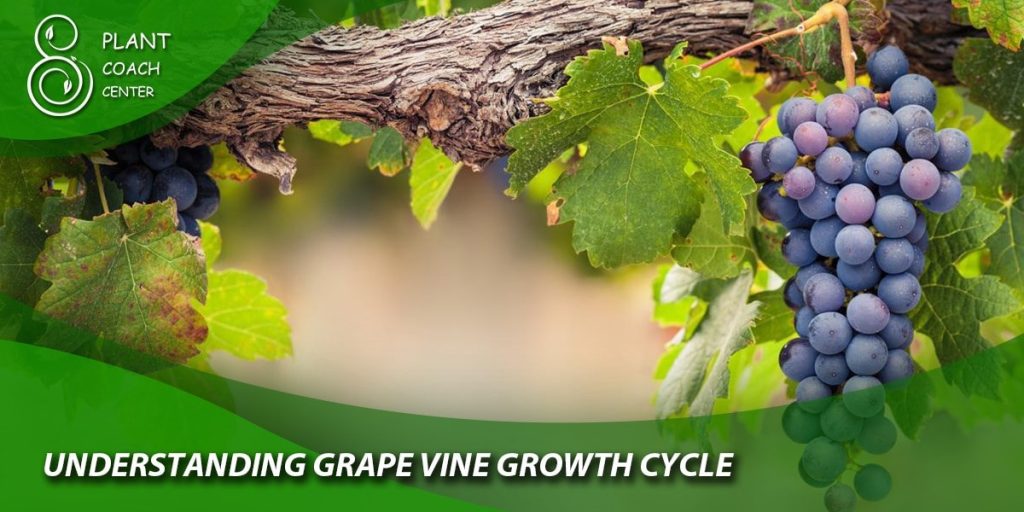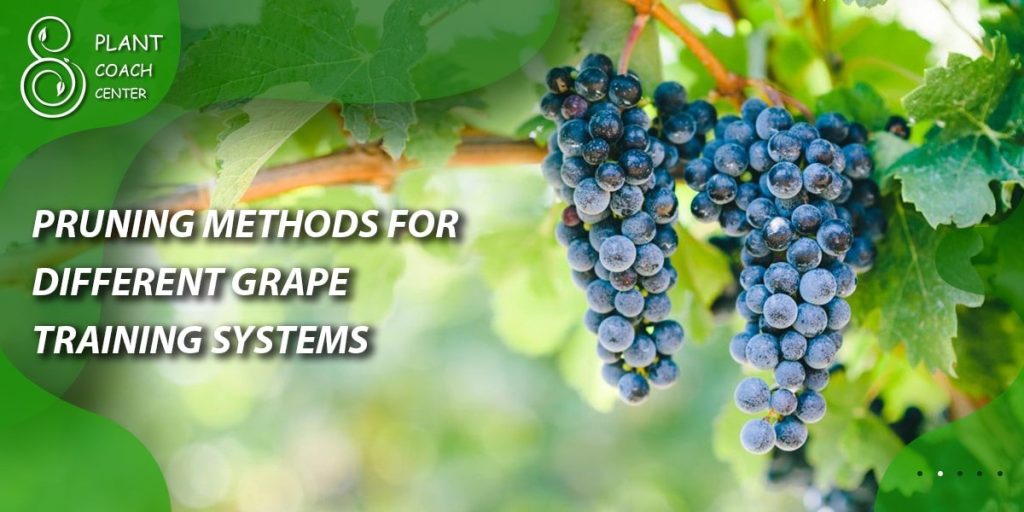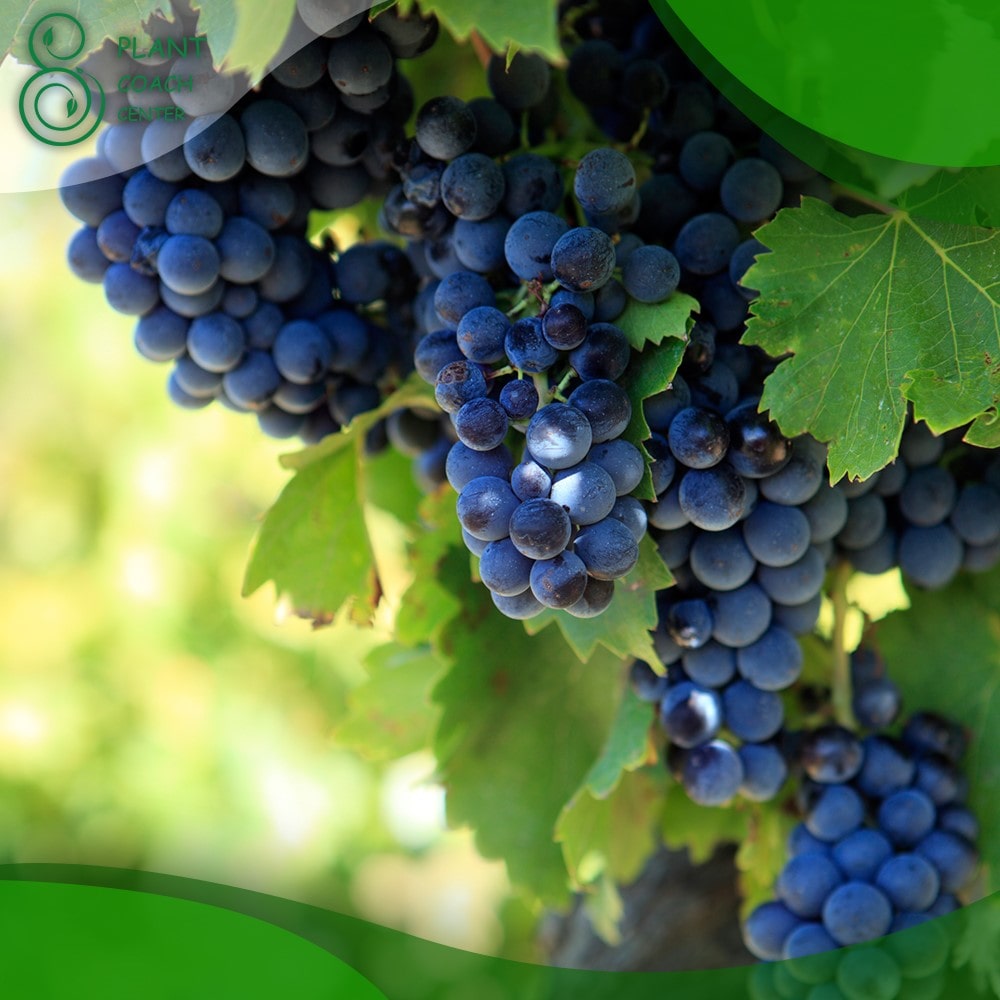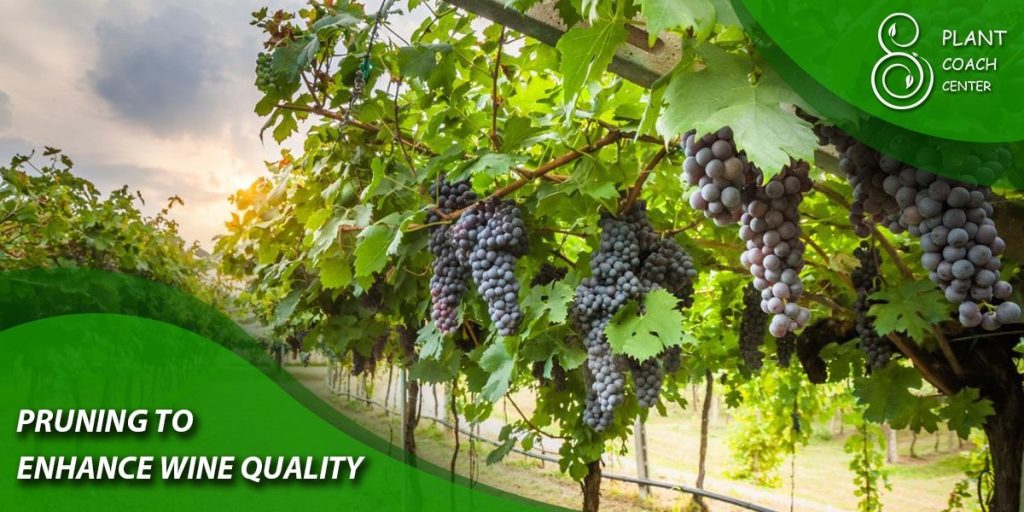When to Cut Back Grape Vines
Grapevine pruning is an essential horticultural practice that plays a crucial role in vineyard management. By selectively removing certain parts of the vine, grape growers can optimize fruit quality, yield, and overall vine health. Understanding the timing and techniques of grapevine pruning is vital for successful grape cultivation.
The Importance of Pruning Grape Vines
Proper pruning of grape vines offers numerous benefits, such as:
- Improved Fruit Quality: Pruning helps to channel nutrients to the most important grape clusters, resulting in better flavor and aroma profiles in the fruit.
- Higher Yield: By eliminating excess vegetative growth, the vine’s energy is directed towards fruit production, leading to increased grape yields.
- Enhanced Air Circulation: Pruning opens up the canopy, allowing better airflow, which reduces the risk of fungal diseases.
- Sunlight Penetration: Adequate sunlight exposure promotes even ripening and uniform grape development.
- Vine Longevity: Regular pruning ensures that the vine maintains its health and productivity for many years.

Understanding Grape Vine Growth Cycle
A thorough understanding of the grapevine’s growth cycle is fundamental to timing pruning operations effectively.
The Life Cycle of a Grape Vine
A grapevine goes through distinct growth stages:
- Dormant Season
- Occurs during winter when the vine is not actively growing.
- Pruning during this period helps shape the vine’s structure and control its vigor for the upcoming growing season.
- Bud Break
- Marks the start of the growing season, with buds swelling and new shoots emerging.
- Early observations during bud break can help assess winter damage and plan pruning accordingly.
- Vegetative Growth
- Rapid shoot elongation and leaf development occur during this phase.
- Early training and canopy management decisions are crucial at this stage.
- Flowering and Fruit Set
- Grapevine flowers appear and are pollinated, leading to the formation of grape clusters.
- Pruning decisions can impact fruit set and overall crop size.
- Fruit Development
- Grapes grow and undergo various physiological changes.
- Pruning practices can influence fruit size, bunch density, and grape chemistry.
- Ripening
- Grapes reach full maturity, and sugar levels rise.
- Timing of pruning may affect ripening patterns and harvest dates.
The Science Behind Pruning Grape Vines
Pruning grape vines is not merely a traditional practice; it has a scientific basis that profoundly influences vine physiology.
How Pruning Affects Grape Vine Physiology
- Pruning impacts the distribution of carbohydrates, hormones, and nutrients within the vine.
- Different pruning methods stimulate varying hormone responses, influencing shoot growth, flowering, and fruit development.
Role of Hormones in Grape Vine Growth and Pruning
- Auxins, cytokinins, and gibberellins play pivotal roles in vine growth and development.
- Understanding hormone interactions helps tailor pruning techniques to achieve specific goals.
Impact of Pruning on Fruit Quality and Yield
- Pruning severity and timing directly affect grape quality and yield.
- Striking the right balance between vegetative growth and fruit production is essential.

Types of Grape Vines and Their Pruning Needs
Various grape varieties have unique characteristics, and their pruning requirements can differ significantly.
Common Grape Varieties
- Red Varieties: Cabernet Sauvignon, Merlot, Pinot Noir, Syrah, etc.
- White Varieties: Chardonnay, Sauvignon Blanc, Riesling, etc.
- Seedless Varieties: Thompson Seedless, Flame Seedless, etc.
Differences in Pruning Techniques for Red, White, and Seedless Grapes
- Red grapes may require different pruning strategies to achieve optimal color development and tannin levels.
- White grape varieties may benefit from pruning methods that enhance acidity and fruit freshness.
- Seedless grape vines need specialized pruning to regulate fruit size and cluster density.
Factors Influencing Pruning Time
The timing of grapevine pruning depends on several key factors that vineyard managers must consider.
Climate and Geographic Considerations
- Pruning schedules vary based on the vineyard’s location and prevailing climate conditions.
- Frost risk and growing season length influence pruning decisions.
Vine Age and Health
- Young vines require formative pruning to establish a balanced framework.
- Older vines may need rejuvenation pruning to maintain productivity.
Training Systems and Trellis Types
- Different training systems (e.g., Guyot, Scott Henry, VSP) influence pruning practices.
- The trellis type affects how the vine is pruned and trained.
Winter Pruning: Best Practices
Winter pruning is a crucial step in preparing grapevines for the upcoming growing season.
Preparing for Winter Pruning
- Assess vine health and any pest or disease issues.
- Gather appropriate tools, such as pruning shears, loppers, and saws.
Step-by-Step Guide to Winter Pruning
- Assessing Vine Health and Structure
- Inspect the vine for any signs of disease or damage.
- Identify the main trunk and healthy canes for the upcoming season.
- Selecting Pruning Techniques based on Grape Type
- Choose the appropriate pruning method based on the grape variety and training system.
- Making the Cuts – Tools and Techniques
- Use sharp and clean pruning tools to make precise cuts.
- Cut at the correct angle and distance from the bud.
- Treating Pruning Wounds
- Apply wound sealant to protect cuts from pathogens and pests.
Summer Pruning: Best Practices
Summer pruning focuses on managing canopy growth and optimizing light exposure.
The Purpose of Summer Pruning
- Remove excess shoots and leaves to enhance air circulation and light penetration.
- Mitigate disease pressure and improve fruit ripening.
Step-by-Step Guide to Summer Pruning
- Removing Excess Growth
- Identify and remove unwanted shoots and suckers.
- Managing Canopy Density
- Thin out the canopy to promote better sunlight exposure to grape clusters.
- Controlling Disease and Pest Issues
- Prune away infected or infested plant parts to prevent further spread.

Pruning Methods for Different Grape Training Systems
The choice of grape training system influences pruning techniques and vine architecture.
Head-Pruned (Goblet) Vines
- Suitable for old, traditional vineyards.
- Pruned to maintain an open, goblet-like shape.
- Retains a limited number of renewal canes each year.
Cordon-Trained Vines
- Utilizes permanent horizontal cordons from which fruiting canes emerge.
- Pruned to renew spurs and remove unwanted growth.
Guyot-Pruned Vines
- Employs a single fruiting cane with a pre-determined number of buds.
- Pruned to remove the old cane and select a new one for the next season.
Scott Henry System
- A variation of the cane-pruned method, with vertical and horizontal canes.
- Pruned to balance vegetative growth and fruiting potential.
Vertical Shoot Positioning (VSP) System
- Emphasizes vertical shoot growth for improved sunlight exposure.
- Pruned to maintain a well-positioned, upright canopy.
Rejuvenation Pruning and Overgrown Vine Management
Over time, grapevines may become overgrown and unproductive. Rejuvenation pruning is a vital practice to restore their vitality.
Signs of Overgrown Vines
- Reduced fruit quality and yield.
- Excessive tangled growth and shading.
Strategies for Rejuvenating Neglected Grape Vines
- Gradual rejuvenation over multiple seasons.
- Selective and targeted pruning to stimulate new growth.
Common Mistakes in Grape Vine Pruning
Pruning mistakes can have adverse effects on vine health and fruit production.
Over-pruning and Under-pruning
- Over-pruning can lead to weak vines with low fruitfulness.
- Under-pruning results in dense canopies and uneven fruit ripening.
Timing Errors
- Pruning at the wrong stage can disrupt the vine’s growth cycle.
- Pruning during frost-prone periods can damage tender shoots.
Improper Cuts and Their Consequences
- Incorrect cutting angles and distances can hamper wound healing.
- Leaving stubs can invite diseases and pests.
Pruning for Different Grape Growing Regions
Pruning strategies may vary depending on the climatic conditions of the vineyard location.
Pruning in Cool Climate Regions
- Pruning to manage frost risk and extend the growing season.
- Techniques to enhance fruit ripening in cooler temperatures.
Pruning in Warm Climate Regions
- Pruning to manage heat stress and prevent sunburn on grape clusters.
- Strategies to preserve acidity and freshness in hot climates.
Understanding and Addressing Grape Vine Diseases
Pruning plays a role in managing common grape vine diseases.
Common Grape Vine Diseases
- Powdery Mildew, Downy Mildew, Botrytis, etc.
- Pruning to remove infected plant material and improve airflow.
Pruning Strategies to Prevent and Manage Diseases
- Using disease-resistant varieties and rootstocks.
- Proper sanitation and removal of infected wood during pruning.
Pruning to Enhance Wine Quality
Pruning practices can directly impact grape and wine characteristics, influencing the final product’s quality.
Influence of Pruning on Grape and Wine Characteristics
- Pruning decisions affect grape composition, including sugar levels, acidity, and phenolic compounds.
- Fine-tuning pruning can tailor wine styles and flavor profiles.
Winegrowers’ Perspectives on Pruning for Quality
- Insights from experienced winegrowers on their pruning approaches.
- Balancing vine health, yield, and wine quality in commercial vineyards.
Advanced Techniques and Research in Grape Vine Pruning
Ongoing research and innovations are continuously improving grapevine pruning practices.
Innovations in Pruning Practices
- Use of precision tools and robotics for more precise pruning cuts.
- Automated pruning systems and their potential benefits.
Ongoing Research and Future Trends
- Studies on the effects of pruning on grapevine genetics and epigenetics.
- Sustainable and regenerative pruning techniques gaining popularity.
Fine-Tuning Pruning Techniques for Specific Grape Varieties
Different grape varieties have distinct growth habits and requirements, making it essential to tailor pruning techniques accordingly.
Red Grape Varieties
- Cabernet Sauvignon: Known for its deep color and structured tannins, Cabernet Sauvignon benefits from moderate pruning to balance vegetative growth and fruit development. Careful cane selection helps maintain an open canopy, ensuring even ripening and optimal grape quality.
- Merlot: Pruning Merlot vines involves managing its vigorous growth to prevent excessive shading. A balanced approach with both cane and spur pruning can achieve the desired vine balance and enhance fruit flavors.
- Pinot Noir: Pruning Pinot Noir is often considered an art form due to its sensitive nature. Gentle spur pruning is preferred to maintain vine balance and avoid excessive yield, allowing for more concentrated flavors.
White Grape Varieties
- Chardonnay: Chardonnay pruning focuses on maintaining a balanced canopy to control yield and promote the desired flavor profile. Cane pruning with a limited number of buds per cane is common to achieve this balance.
- Sauvignon Blanc: Pruning for Sauvignon Blanc aims to preserve its vibrant acidity and fresh aromatics. Careful removal of excess shoots and leaves allows sunlight to penetrate the canopy and enhance fruit quality.
- Riesling: Pruning Riesling vines requires attention to detail to retain its natural acidity and delicate aromas. Generally, minimal pruning is preferred to avoid excessive vigor and ensure proper fruit maturation.
Seedless Grape Varieties
- Thompson Seedless: Pruning Thompson Seedless grapes involves managing its strong vegetative growth and high fruitfulness. Cane pruning with a focus on renewal canes helps balance fruit production and maintain vine health.
- Flame Seedless: Flame Seedless benefits from summer pruning to manage canopy density and sun exposure for its colorful, sweet berries. Removal of lateral shoots and excess foliage encourages uniform ripening.
Fine-Tuning Pruning Techniques for Different Training Systems
The choice of training system significantly influences pruning practices and vine architecture. Fine-tuning pruning techniques for each system optimizes vine performance.
Cordon-Trained Vines
- Double Cordon: In this system, two cordons run along the trellis wire. Pruning involves selecting and training the appropriate number of spurs on each cordon.
- Single Cordon: A single cordon is trained horizontally along the trellis, and pruning focuses on spur selection and renewal to maintain balanced fruiting.
Guyot-Pruned Vines
- Cane Pruning: In the Guyot system, the previous year’s fruiting cane is entirely removed, and a new cane is selected and trained for the next season. Careful cane positioning and bud selection are critical for successful pruning.
- Spur Pruning: Spur pruning in the Guyot system involves retaining two to three short spurs, each with two buds. This method can be advantageous for older vines with less vigor.
Scott Henry System
- Canopy Management: The Scott Henry system incorporates both vertical and horizontal canes. Pruning aims to balance canopy density between the two levels to optimize fruit exposure to sunlight.
Vertical Shoot Positioning (VSP) System
- Shoot Positioning: In the VSP system, pruning involves positioning and securing shoots vertically along the trellis wires. Proper shoot selection and positioning enhance sunlight penetration and improve air circulation.
Conclusion
Grapevine pruning is both an art and a science that demands an understanding of vine physiology, growth cycles, and training systems. This comprehensive guide has explored the various aspects of grapevine pruning, empowering vineyard managers and growers with the knowledge to optimize fruit quality, yield, and vine health.
Proper timing and execution of winter and summer pruning, tailored to specific grape varieties and growing regions, are essential for achieving the desired outcomes. While common mistakes can hinder vine performance, careful pruning practices can revitalize neglected vines and enhance overall wine quality.
With advancements in pruning techniques and ongoing research, the future of grapevine pruning promises to be even more exciting. As we continue to refine our understanding of grapevine biology and explore innovative methods, the art of grapevine pruning will continue to evolve, contributing to the continued success and sustainability of the wine industry.
Remember, mastering grapevine pruning requires experience and adaptability, as each vineyard presents unique challenges. By combining knowledge, experience, and a passion for quality wine, vineyard managers and growers can unleash the full potential of their grapevines and produce exceptional wines that captivate palates worldwide.
When is the best time to prune grape vines?
Winter, during the dormant season, is ideal for major pruning, while summer is suitable for canopy management.
How does pruning impact grape quality?
Pruning directs vine resources to improve fruit quality, yield, and disease resistance.
Can I use the same pruning technique for all grape varieties?
Different grape varieties require tailored pruning methods to optimize their unique characteristics.








